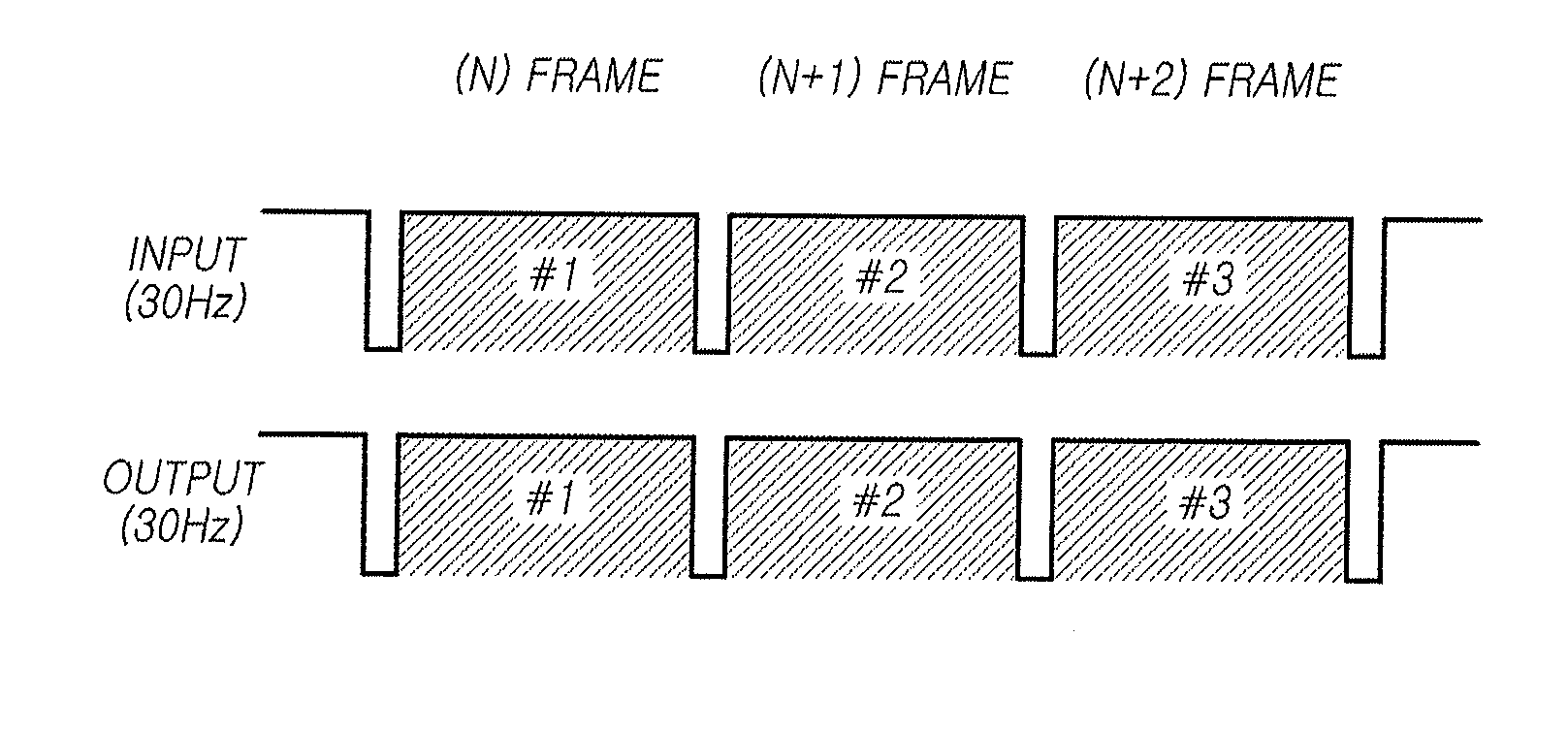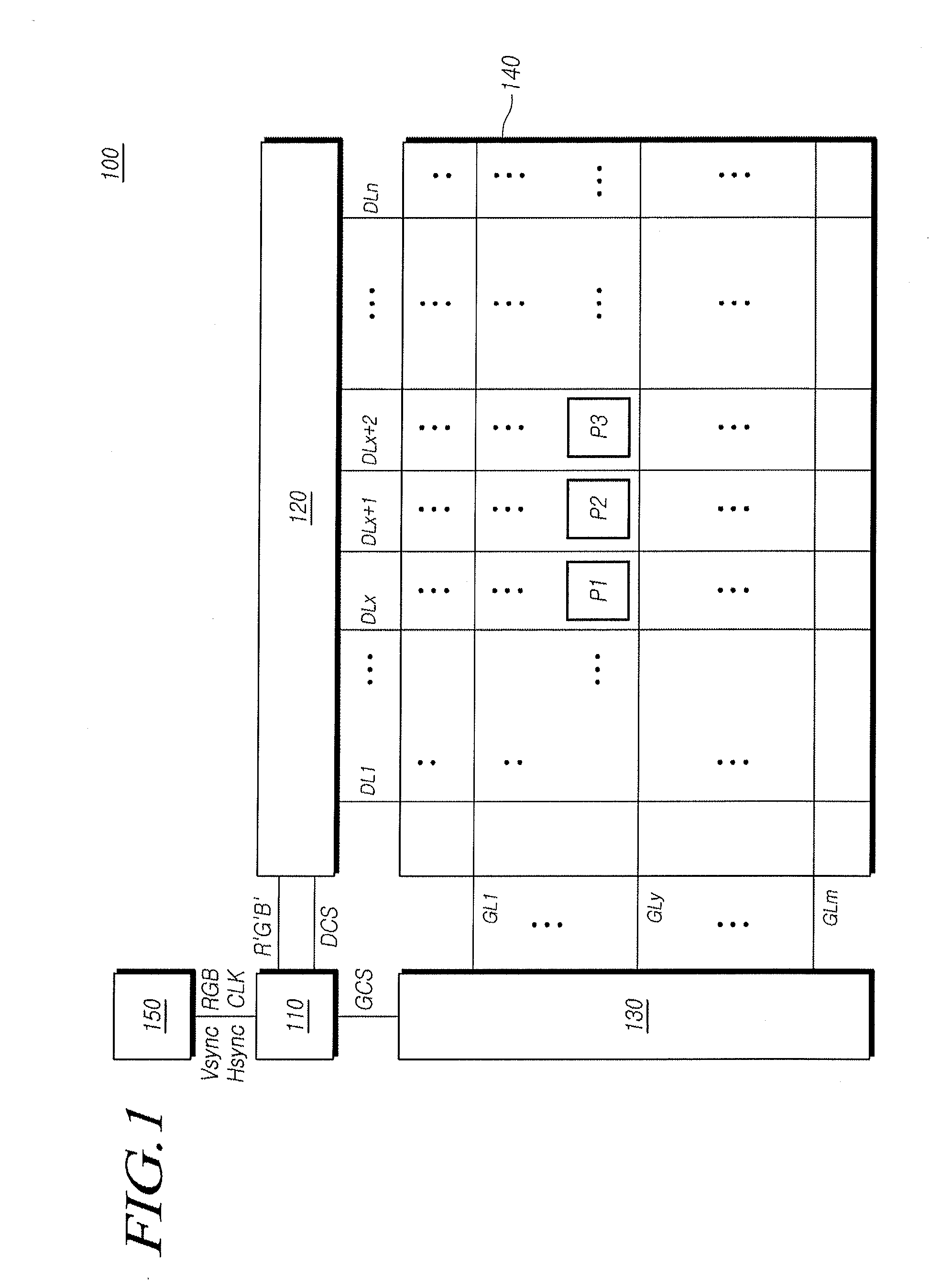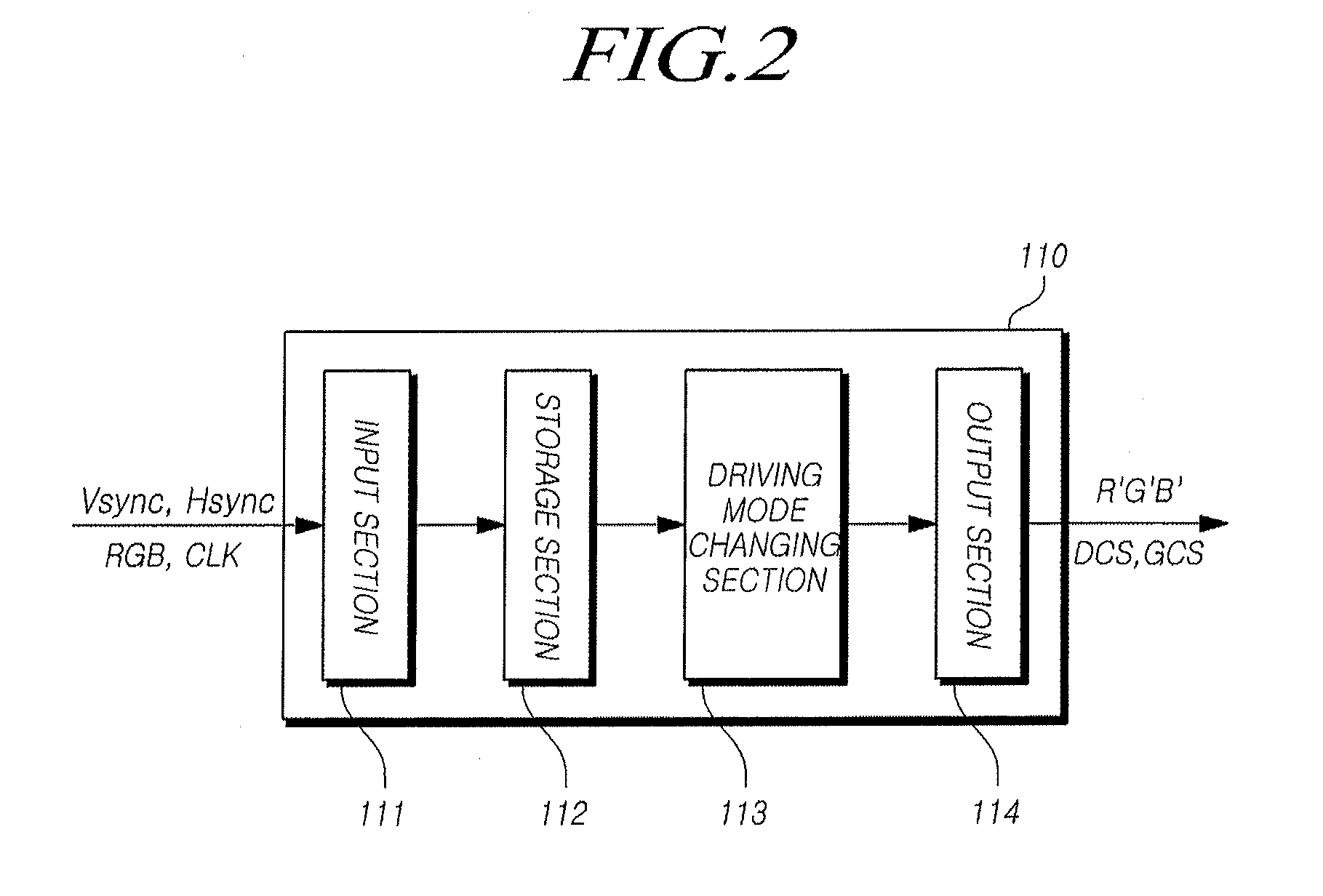Display device and method of driving the same
a technology of a display device and a drive mechanism, applied in the direction of electric digital data processing, instruments, computing, etc., can solve the problems of constant power consumption due to voltage transition, waste during power consumption, etc., and achieve the effect of reducing power consumption
- Summary
- Abstract
- Description
- Claims
- Application Information
AI Technical Summary
Benefits of technology
Problems solved by technology
Method used
Image
Examples
first embodiment
[0052]FIG. 2 is a detailed view showing an exemplary embodiment of the timing controller shown in FIG. 1.
[0053]Referring to FIG. 2, the timing controller 110 includes a input section 111 which receives timing signals Vsync, Hsync and DE and an image signal RGB transmitted from the host system 150, a storage section 112 which stores the image signals received from the input section 111, a driving mode changing section 113 which analyzes the image signals and changes a driving mode depending on the image signals, and an output section 114 which outputs image signals and control signals according to the changed driving mode to the display panel 140.
[0054]As described above, when the display panel 140 is an LCD panel, the driving mode changing section 113 changes inversion driving from among dot inversion, line inversion and frame inversion.
[0055]The LCD panel 140 drives the liquid crystal sandwiched between the first and second substrates by alternately charging and holding a voltage. ...
second embodiment
[0071]FIG. 5 is a detailed view showing another exemplary embodiment of the timing controller shown in FIG. 1.
[0072]Referring to FIG. 5, the timing controller 110 includes a input section 111 which receives timing signals and image signals transmitted from the host system 150, a storage section 112 which stores the image signals received from the input section 111, a driving mode changing section 113 which analyzes the image signals and changes the driving mode depending on the image signals, and an output section 114 which outputs image signals and control signals according to the changed driving mode to the display panel 140. The timing controller 110 also includes a clock generator 115 which generates a first clock acting as a standard clock and a second clock acting as a reference clock and a multiplexer (MUX) 115 which outputs one signal from among the image signals and control signals, which are inputted from the input section 111, and the image signals and the control signals...
third embodiment
[0077]In a third exemplary embodiment, the driving mode changing section 113 can change the drive frequency of an Nth frame depending on the complexity of image signals within the Nth frame.
[0078]Theoretically, flickering in an image may originate from different levels of voltage transition since pixels included in the image have different pixel values. At 60 Hz, even if the variation is very small due to the optimization of a common voltage, it may be noticeable when the drive frequency is high. When the drive frequency is reduced, the optimum position of the common voltage also changes. The low drive frequency causes even a minute variation to be clearly observed. When different gray scales are scattered on the screen, flickering becomes evident due to deviations in which the gray scales have different optimum common voltages. Therefore, the driving mode changing section 113 produces a proper drive frequency by calculating the complexity and setting a suitable range of the complex...
PUM
 Login to View More
Login to View More Abstract
Description
Claims
Application Information
 Login to View More
Login to View More - R&D
- Intellectual Property
- Life Sciences
- Materials
- Tech Scout
- Unparalleled Data Quality
- Higher Quality Content
- 60% Fewer Hallucinations
Browse by: Latest US Patents, China's latest patents, Technical Efficacy Thesaurus, Application Domain, Technology Topic, Popular Technical Reports.
© 2025 PatSnap. All rights reserved.Legal|Privacy policy|Modern Slavery Act Transparency Statement|Sitemap|About US| Contact US: help@patsnap.com



